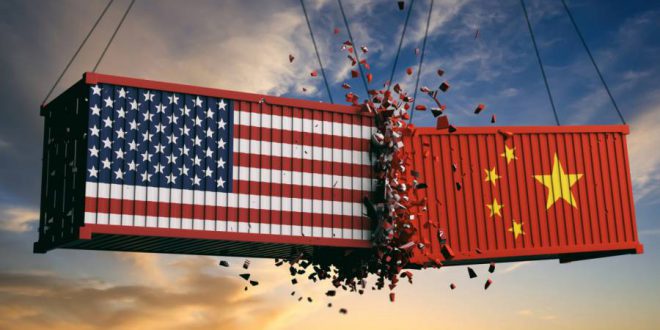China unveiled this week measures to reinvigorate its economic growth with support for infrastructure investments that are likely to boost demand for various commodities. including oil.
As the U.S.-China trade war is escalating and policy makers around the world are warning that tariffs and counter-tariffs could weaken global economic growth. China is looking to boost its economy with measures to expand domestic demand and promote investments. including in infrastructure.
China’s key policies in supporting investment include guaranteeing funds for projects under construction. and promoting the construction of major projects. The investment. which would welcome private equity participation. will be focused on the transportation. oil and gas. and telecommunications sectors. according to the Chinese cabinet meeting’s statement.
Beijing also plans to pursue a more proactive fiscal policy. extend loans to small and medium-sized enterprises (SMEs). and cut corporate taxes.
The plan—China’s most notable attempt this year to accelerate its economic growth—is expected to lead to growing demand for oil and other commodities. according to analysts.
The Chinese economic stimulus plan boosted financial markets in Asia and commodity markets on Tuesday and Wednesday.
In the oil market. the Chinese economic and fiscal package boosted investor confidence earlier this week that a potentially stronger Chinese economy would raise oil demand in the world’s top crude oil importer.
Oil prices were also supported on Wednesday by the weekly U.S. inventory report—the Energy Information Administration reported a draw in crude oil and another draw in gasoline inventories for the week to July 20. Crude oil inventories were 6.1 million barrels lower in July 16-20 than in the week before. when the EIA reported a surprise build that made the price rally stutter.
China’s economic growth eased in the second quarter of this year to 6.7 percent. in line with expectations. but slightly down from the 6.8 percent growth of the previous three quarters.
The Chinese government is intent on preserving growth amid the rising U.S.-China trade tensions. Beijing targets economic growth for the full-year 2018 at 6.5 percent. but flagged the fact that the economy in eight provinces. regions. and cities saw slower growth in the first half. The Tianjin area. for example. “showed signs of a marked slowdown.“ posting just 3.4 percent growth in the first half of 2018.
“The government is sending a clear signal that it is preparing to defend growth.“ ANZ economists Raymond Yeung and Betty Wang said in a note. commenting on the Chinese economic stimulus.
According to Iris Pang. economist for Greater China at ING. most of the fiscal spending has already been planned and in the pipeline.
“The good news. however. is that the government wants to spend money earlier than planned.“ Pang wrote. noting that ING expects additional fiscal spending later this year.
“We expect more aggressive fiscal spending will be announced later if and when the trade war escalates and believe this year’s stimulus could be around 4.5% GDP.“ Pang said.
“At such an unusual time. the Chinese government will likely apply unusual measures to shield itself from an economic slowdown sparked by a trade war.“
Analysts expect China to protect the pace of its economic growth and not let it slow down markedly. This is good news for oil demand in the world’s largest crude oil importer and a potential bullish factor for oil prices.
 Iran Energy News Oil, Gas, Petrochemical and Energy Field Specialized Channel
Iran Energy News Oil, Gas, Petrochemical and Energy Field Specialized Channel




